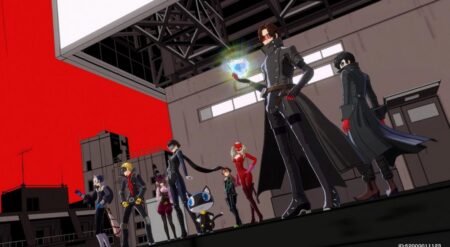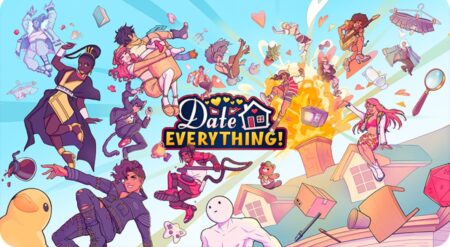In Little Goody Two Shoes, AstralShift uses 90s shoujo anime to tell a horror story in the small and religious Kieferberg Village. Published by the Square Enix Collective, the game pays homage to the early days of PlayStation adventure games with gorgeous sprites that resemble adorable chibis and hand-drawn backgrounds and cinematics that capture the hallmarks of shoujo in gorgeous and dynamic ways. In Little Goody Two Shoes, you play Elise, an ambitious girl determined to become really, really, really rich and escape her humble life. In a narrative that elicits some comparisons to A24’s Pearl, although less maniacal, the game captures its audience through puzzles, exploration, and powerful uses of traditional mechanics from both animation and RPGs.
After finding a mysterious pair of shiny red shoes buried in her backyard, Elise is bewitched and must avoid suspicion from the villagers while looking for a rumored demon in the woods to grant her wish–at a high price. While Elise just longs for a good and comfortable life, the villagers are telling stories of a witch in the woods, scared of her magic and danger. But as for Elise, she is not. Inspired by the Hans Christian Anderson fairytale, players step into Elise’s shoes and are pulled into a gripping narrative horror adventure filled with romance, magic, flesh-eating butterflies, other nightmare scenarios, and the oppression of religious austerity.
The game starts with a thrilling, cute anime opening and then Little Goody Two Shoes gives players the option to play with an English or Japanese voice track—the latter works so perfectly that I can’t imagine the game played in English. Additionally, players can choose to use modern control mapping schemes or traditional ones, adding another layer of nostalgia for gamers to latch on to before their playthrough though neither choice impacts the gameplay too much. With a quick set-up, the game is off to the races as you play as Elise, find your way home, and begin the story.

Little Goody Two Shoes uses text screens that can be auto-scrolled and are central in playing through the story. Walking around with your lantern, you solve puzzles and find your way through the woods in a way that doesn’t focus on combat. Instead, the game focuses on strategy and puzzle-solving as you explore the nightmarish woods that warp around you. The way that this pushes you to interact with the environment during larger battles is extremely immersive. While making your way through the danger, the player has to keep an eye on a few elements: hunger and sanity. By using different food and items, these two gauges are key to staying alive, although the “game over” title card is the most beautiful of the year.
This plays directly into the three core game elements: “Sustenance,” “Reputation & Suspicion,” and “Exploration & Narrative.” Each core pillar is integrated into how you plan your day. By splitting the story into two parts, the player can explore the town and the people in it, with romances and other interactions that will impact your playthrough. You can choose from one of three women to romance, and you can also choose how brash you want your Elise to be.
For me, Elise may be seen as greedy by some, but in reality, she just wants a better life, and the way the townspeople treat her as if she is already inferior for her curiosity doesn’t help matters. The prompts from villagers make it hard to keep your suspicion bar low, and as time went on, I found myself less concerned with them not thinking I was a witch and more concerned with being as rude as possible, which led to some of my problems in the village. I wanted my Elise to be as confident as possible and, ultimately the qualities that many would find her unlikeable, in her circumstances, it’s easy to understand her.

With ten total endings that can be broken down into five segments, the personal choices you make on how you choose to react to the people of Kieferberg and your love interests make the game fairly replayable. Little Goody Two Shoes isn’t an RPG, but its mechanics and social system make it feel fairly adjacent. That said, the game integrates elements of survival, social sim, and puzzlers that sometimes feel disjointed from each other. In fact, the daytime feels like a completely separate gaming experience altogether. While you talk with villagers, you also have to do odd jobs through mini-games, which are presented in an arcade cabinet. As you earn money, you use it to keep a girl quiet and keep your suspicion low.
The daytime is very different than night, and as you work through both, you craft your story. At times, it can feel jarring and disjointed. However, these moments allow the horror of the game to breathe after experiencing a high-tension forest. But to think that the daytime isn’t filled with its own human monsters, you’d be wrong. Your conversations with villagers come with their own tense weight as you attempt to avoid suspicions.
As Elise, you can choose to be brash and bold, pushing back against the villagers and the clergy, but if you do, you run the risk of being considered a witch, and that has its own consequences. If you chat with enough townspeople enough times, the favor you gain can tip the scales. However, the social elements aren’t the only ways to make the game replayable. If the endings aren’t enough to entice you, there are plenty of exploration elements to keep you busy on your next playthrough or extend your playthrough if you only want to play once. Exploring every cave, finding all Golden Maidens, and crafting all of the ritual materials all yield more answers to the mysteries layered in the game.

Little Good Two Shoes’ shining element, though, is its art. The sprites can range from adorable to nightmarish, and the hand-drawn art balances the game’s beauty against its horror. There are certain enemies and sections of the game that are purely terrifying, but others capture the cuteness of 90s shoujo series that is often layered with darkness too, most easily recognizable in works from CLAMP. This is one of the most beautiful games you’ll play this year and the ability to build dynamic landscapes and zones are perfection.
Even the transition sequences between times days, the arcade cabinet, cinematics, and text screens are so carefully crafted that it’s bound to capture any anime lover. Usually, when anime is used as a reference, we often see shonen inspiration from any generation, but this title caters to animation focused on girls and women in a very specific way. The lightness and effervescent nature of the art make this game one perfect for those of us who love cuteness and love horror in equal measure.
Additionally, the aesthetic of the game isn’t just a wrapper. Instead, it’s baked into how the entire story is laid out, the tropes at play, and ultimately, the score of the series, too. The developers at AstralShift clearly love anime, and it comes through by virtually creating their own. While there are elements that a well-versed shoujo fan will see, Little Goody Two Shoes is something entirely original. Enchanting is one word, horrifying another, but this game is absolutely a must-play for anyone longing for a beautiful homage to Japanese animation as a medium and adventure games of the past.
Little Goody Two Shoes
-
Rating - 8/108/10
TL;DR
The developers at AstralShift clearly love anime, and it comes through by virtually creating their own. While there are elements that a well-versed shoujo fan will see, Little Goody Two Shoes is something entirely original.







